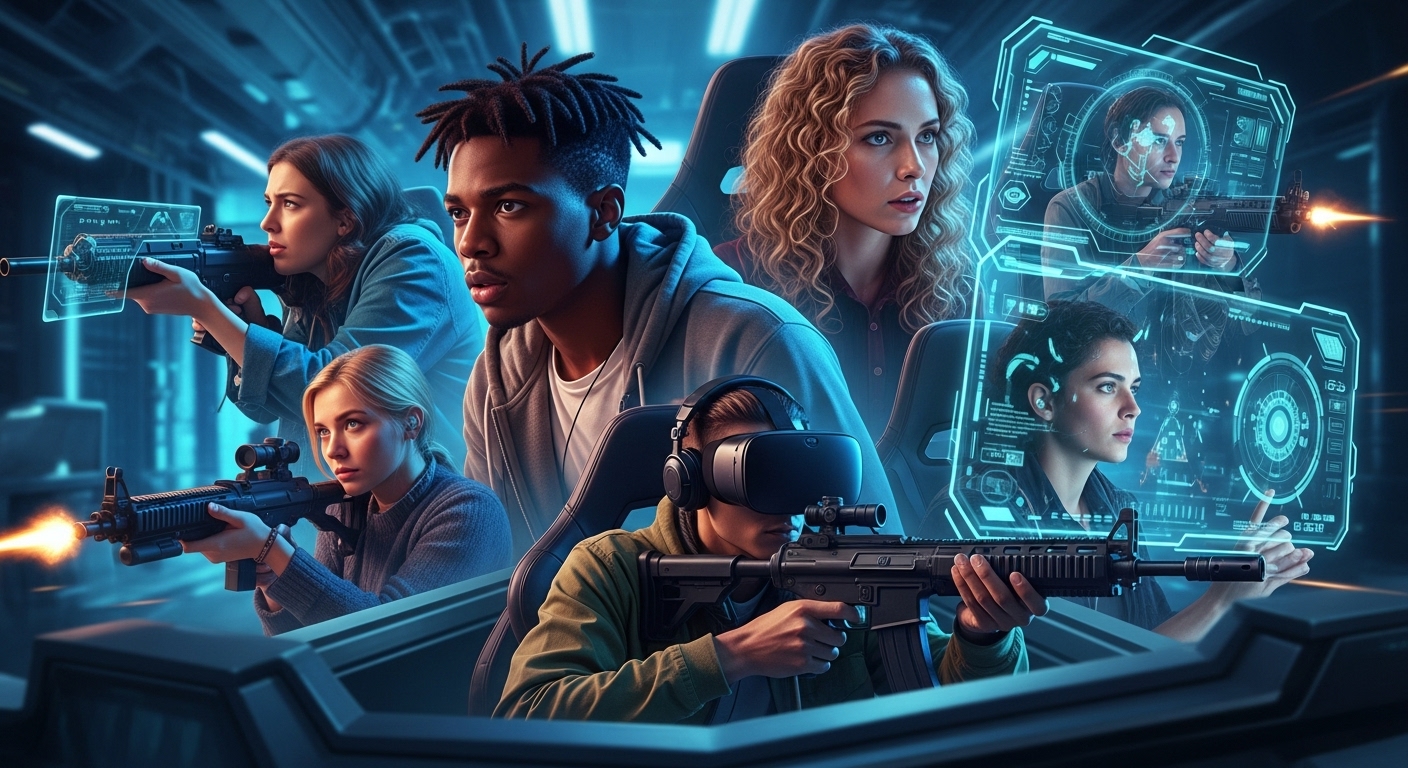First-person shooters, or FPS, have been around for what feels like forever. It’s a genre that’s stood the test of time, morphing, evolving, and sometimes, revolutionizing the way we think about gaming. You know, back in the days of Doom and Wolfenstein 3D, the whole concept was groundbreaking. Fast forward to today, the genre still holds a massive grip on the gaming community.
The Evolution of FPS Games
The journey of FPS games from simple graphics to today’s hyper-realistic environments is something else. Graphics, sound design, and game mechanics have all advanced to a point where games are almost cinematic experiences. But it wasn’t always this way. Remember the pixelated textures of the early 90s?
From Pixels to Polygons
Back then, the FPS genre was more about the thrill of the kill rather than eye-catching visuals. People often forget how games like Quake introduced 3D environments and set the stage for future developments. It was revolutionary, you know? Moving from flat, sprite-based graphics to fully rendered 3D worlds was a big leap. But the game mechanics, the core of what makes an FPS game engaging, was already there.
Gameplay Mechanics: The Heartbeat of FPS
So, what makes an FPS tick? At its core, the genre is about immersion and fast-paced action. You’re thrown into the fray, often with little more than a gun and your wits. Which, let’s face it, can be incredibly thrilling. The rush of navigating through a hostile environment, making split-second decisions. It’s all about that adrenaline, baby.
One could argue that the mechanics haven’t changed that much. And you’d be right, to a degree. The focus has always been on shooting, aiming, and dodging. But the nuances? Oh, they’ve definitely evolved. From weapon customization and skill trees to complex storylines and character development—FPS games have expanded their horizons.
The Social Aspect of First-Person Shooters
Okay, but what about the social aspect? Today’s FPS games are as much about community as they are about gameplay. The rise of online multiplayer games like Call of Duty and Counter-Strike has turned what was once a solitary experience into a communal one. You’re not just competing against AI; you’re up against players from around the world. Global leaderboards, in-game chats, and multiplayer modes have made these games social platforms in their own right.
Competitive Play and Esports
The competitive play has reached a new level. Esports has taken things to a whole new dimension. Tournaments, big-time sponsorships, and live-streaming have transformed FPS games into spectator sports. Watching pros duke it out in games like Overwatch or Rainbow Six Siege is almost as thrilling as playing. Almost. But hey, not everyone can aim like a pro.
Check out this link to dive deeper into the competitive aspects of FPS games.
The Impact of Technology on FPS
Technology, man. It’s the single most important factor driving the evolution of FPS games. Graphics have become so lifelike; it’s eerie sometimes. But it’s not just about looking good. Innovations in AI, physics engines, and networking have also played a huge role. Let’s not forget VR. Ah yes, virtual reality. It’s like stepping into another dimension, one where you are quite literally in the game.
AI and Game Design
Artificial intelligence has come a long way. AI in FPS games isn’t just about making smarter enemies. It’s about creating a more immersive, reactive world. Think about it. A game that adapts to your playstyle, that keeps you on your toes. It’s not just about shooting. It’s about strategy, adaptation, and skill. Kind of like playing chess with a machine gun.
Table: Key Technological Innovations in FPS
| Aspect | Innovation |
|---|---|
| Graphics | Ray Tracing, High-Resolution Textures |
| AI | Procedural Adaptation |
| Networking | Low Latency Servers |
| VR | Full Immersion Experience |
The Future of FPS
Where’s this all heading? Hard to say. The horizon is vast, and the possibilities are endless. As tech continues to evolve, so will FPS games. We might see more integration with VR, more realistic physics, and maybe even AI that can truly learn over time. Who knows?
Some might argue that FPS games have plateaued, but I’d say they’re just getting started. There’s always room for innovation, and with the massive player base these games enjoy, developers are continually motivated to push the envelope.
For more insights into what makes an FPS game great, and why some just don’t hit the mark, check out this article on Forbes. It’s a good read.
FAQs
- What’s the appeal of FPS games? It’s the immersion, the adrenaline rush, and the thrill of fast-paced action. Something about being in the thick of it is just exciting.
- Are FPS games just for hardcore gamers? Not at all. There are various difficulty settings to cater to casual gamers as well. Whether you’re a newbie or a vet, there’s something for everyone.
- Do I need top-notch hardware to enjoy FPS games? Not necessarily. While high-end hardware enhances the experience, many FPS games scale down well for more modest setups.
- How do FPS games affect hand-eye coordination? Positively, generally. They require quick reflexes and precision, which can help improve coordination over time.
- Can FPS games be educational? In some ways, yes. They can teach strategic thinking, resource management, and team collaboration. Plus, they often have stories that can be quite enriching.
So there you have it. The world of FPS is vast and continually evolving. Who knows what the next decade will bring? Maybe something that’ll blow our collective minds. Or, maybe just more of the same, but with prettier graphics. Either way, it’ll be a ride worth taking.


